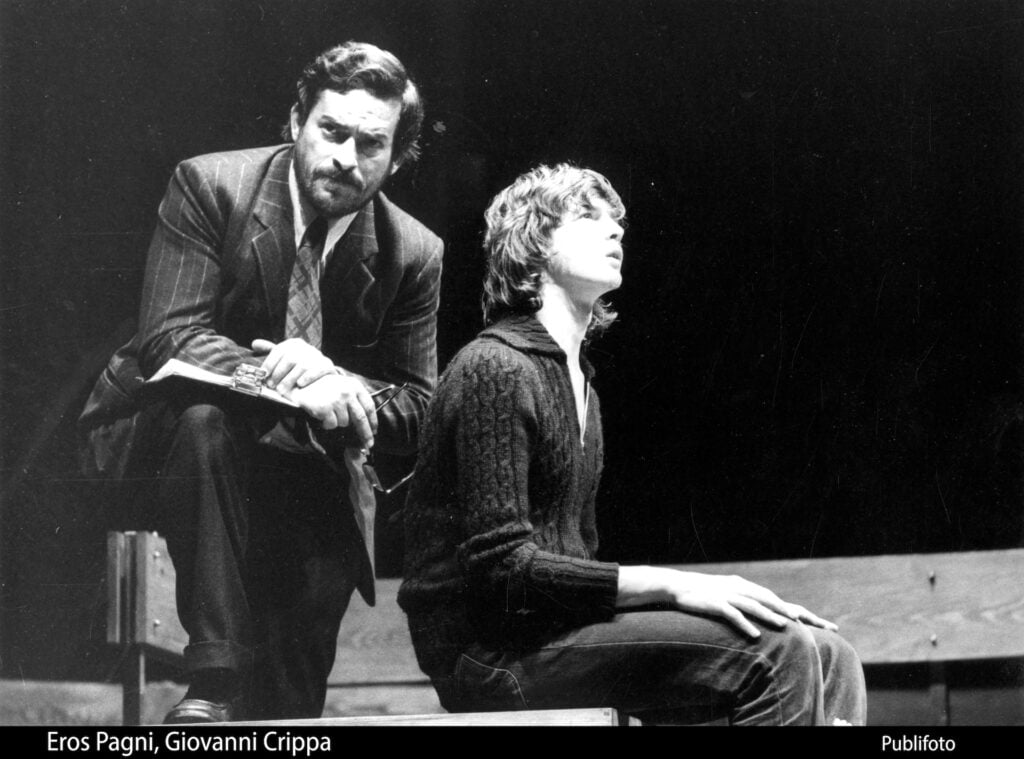academia.edu di luned� 18 novembre 2019
di Andrew COLLINS and Rodney HALE
Göbekli Tepe is perhaps the most enigmaticdiscovery in archaeology for a long time—aseries of megalithic structures constructedprimarily by a hunter-gatherer society whothrived in the northernmost extension of theFertile Crescent in the Early Holocene. Thestone structures are located in a layeredoccupational mound (Arabic tell, Turkish tepe) situated at a height of approximately 780 mabove sea level on an isolated mountain ridgeat the western termination of the Ante-Taurusrange ( 37°13'24.18" N, 38°55'20.85"E ), some15 km northeast of the city of Sanlıurfa insoutheast Anatolia.
Excavations under the auspice of theGerman Archaeological Institute (DAI) andMuseum of Sanliurfa, and headed byProfessor Klaus Schmidt of the University ofHeidelberg, have taken place since 1995 andare ongoing today (see Schmidt 2012). Anestimated ten percent of the tell has now beeninvestigated, with four main enclosures and alarge number of other structures being revealed.
Two types of structure are seen, oneevolving from the other. The earliestenclosures, built c. 9500-8500 BC (Layer III, which corresponds to the Pre-PotteryNeolithic period—PPNA), originallyincorporated twin monoliths with T-shapedterminations set up parallel to each other (seeFig. 1). Around them are in situ circles, ormore correctly ellipses, of slightly smaller,standing stones (1.5—3 m in size), which aregenerally T-shaped in appearance anddecorated with carved art showingzoomorphic forms and/or anthropomorphicfeatures. These are arranged in a starburstfashion, their front narrow faces turnedtowards the center of the enclosure. They areset in stonewalls, which often incorporatestone benches (see Fig. 2).
Later structures, built c. 8500-8000 BC (LayerII, which corresponds to the Pre-PotteryNeolithic period—PPNB) are rectilinear inform and much smaller in size. They alsocontain T-shaped pillars, although here thestones, some of which are decorated, arereduced in size to no more than 1—1.5 m.
No evidence of domestic activity hasbeen found at Göbekli Tepe, leading to speculation that it functioned as a regionalcentre of cultic activities during the tenth andninth millennium. Its final sanctuaries weredecommissioned and buried beneath theartificial mound around c. 8200-8000 BC(Schmidt, 2012).
Astronomical Targets
Even though the different forms ofenclosure present at Göbekli Tepe prevents asingle solution as to their overall function, theparallel alignment of the twin centralmonoliths has naturally prompted speculationregarding their possible alignment towardscelestial objects, with Orion being proposedas a possible stellar target (Schoch, 2013) andalso Cygnus (Collins, 2013a, 2013b, Collins &Hale, 2013). It is a line of enquiry worthpursuing, especially as the mountaintopplateau on which the occupational mound issituated would have had uninterrupted viewsof the local horizon.
Italian archaeoastronomer Giulio Maglidismisses Orion as being the target of themonuments at Göbekli Tepe as it would meana much younger date for their construction,i.e. c. 8500-8000 BC, which does not matchradiocarbon dating (see below). He dismissesalso alignments towards Cygnus, whichalthough correct, seem unnatural to what hesees as the natural orientation of themonuments towards the southeast. Instead,he proposes that the mean azimuths of twincentral pillars in three key enclosures fromLayer III—B, C, and D (see Fig. 3)—targetedthe rising of Sirius between the dates 9100-8300 BC (Magli, 2013).
Magli points out that around 9300 BCSirius began appearing low on the southhorizon having been invisible from thelatitude of Göbekli Tepe since c. 15,000 BC. The sight of this new “guest” star he suggestsperhaps motivated the Proto-Neolithiccommunities of southeast Turkey to createthe monuments of Göbekli Tepe.
Atmospheric Extinction
It is an intriguing theory, yet one thwart with problems from the outset. The biggestdrawback with Sirius’s use as a stellar target sosoon after its reappearance is that it wouldhave been barely visible to the naked eye, itsusual bright magnitude diminished due toatmospheric extinction. This can be calculatedusing available mathematical formulaeregarding the various sources of dimmingaffecting the apparent brightness of a star— see Schaefer (1993), with a further expansionby Flanders & Creed (2008). Using theseformulae we can arrive at a measure of thelikely magnitude loss, and therefore the visibility, of a star at any altitude above thehorizon at the location of Gobekli Tepe.
To achieve this, we must take intoaccount a particularly variable component ofthe losses involving atmospheric aerosols,such as smoke, dust, moisture, etc, so we usea value representative of what is consideredgood viewing conditions. A widely acceptedfigure for the lower limit of human vision of astar is magnitude 6. Yet Schaefer, with goodreason, finds that this figure should be magnitude 5.8, therefore we have adopted this value for the point at which a star is just visible.
Using these methods, we arrive at amean value for the altitude at which Siriusbecomes visible, which is 0.6°. Thus Sirius would not have been reliably visible at 0.5°altitude, the figure used by Magli to make hiscalculations. Having said this, there wouldundoubtedly have been occasions of better visibility when Sirius could have been dimlyobserved at this lower altitude. Yet this ratheruncertain situation is enough on its own tomake Sirius an unsuitable object fororientating such a major building project.
Diurnal arcs
Other factors also have to be consideredregarding the observation of Sirius during theEarly Holocene. The daily rotation of theEarth causes the stars to progress across thesky. In the case of Sirius, c. 9300-9000 BC,the star skims the southern horizon during itsnightly transit. Yet as it becomes visible to thenaked eye we find that for an increase ofaltitude above the horizon of half a degree, which occurs across a period of just 20minutes, the star swings clockwise towards thesouth by no less than 3°.
So to use Sirius at an altitude of 0.5° toestablish an accurate point of orientation,great precision would have been required todetermine the presence of the star where itmight or might not have become visible to thenaked eye, a factor dependent on theatmospheric conditions existing at the time.
Mean Azimuths of Twin Central Pillars
Compounding the issues still further areinconsistencies in Magli’s calculations of themean azimuths of the twin central pillars ofthe monuments in question. His meanazimuths for the twin central pillars of theenclosures, and the dates they target the risingof Sirius at 0.5°, are given as follows:
Enclosure D 172° 9100 B
CEnclosure C 165° 8750 BC
Enclosure B 159° 8300 BCFor some reason, Magli’s mean azimuths fortwo enclosures—B & D—differ from those suggested by the DAI’s own site plan.Moreover, our own calculations suggestadditional dating differences to those offeredby Magli.
When these factors are taken into account, aslightly altered set of figures is achieved usingthe mean azimuths of the twin central pillarsto determine their date of alignment towardsthe rising of Sirius at a height of 0.5° (and seeFig. 4):
Enclosure D 173° 9400 BC
Enclosure C 165° 8950 BC
Enclosure B 157° 8275 BC
In all instances the correlation datebetween Sirius rising and the alignment of thepillars has now altered slightly. For instance,in 9400 BC when the twin pillars of EnclosureD targeted the rising of Sirius, the star wasbarely visible to the naked eye across its entiretransit of the southern horizon (see Fig. 5).
By 8950 BC when Enclosure C’s twinpillars targeted the rising of Sirius, the star would still have been faint as it transited themeridian, due south.
Around 8275 BC, when the twin centralpillars of Enclosure B targeted the rising ofSirius, the star climbed to make a moreappreciable arc, reaching a maximumelevation of 6° as it crossed the meridian.Despite this encouraging fact, we now comeinto massive dating issues.
Bone samples taken from Enclosure Bhave provided radiocarbon dates in the rangeof 8306-8236 BC (Schmidt and Dietrich,2010), coincident to the proposed date that itstwin central pillars targeted the rising of Sirius. Yet according to the excavators these humanremains probably come from intrusive burialsmade long after the structure’s construction(Schmidt and Dietrich, 2010). Indeed,Enclosure B is built on the plateau’s bedrockimmediately south of Enclosure D, and westof Enclosure C, which are both thought tohave been in place by around 9000 BC(Schmidt & Dietrich, 2010). Thus there isevery possibility that all three of thesestructures, along with Enclosure A, which liesimmediately south of Enclosure B, areroughly contemporaneous. If so, then thetwin central pillars of Enclosure B cannot have targeted the rising of Sirius at the time oftheir erection.
Conclusions
Taking all the evidence intoconsideration, Sirius’s feeble appearance andunsuitability as a stellar marker during theepoch of construction at Göbekli Tepe makesit unlikely that the star’s reappearancemotivated the region’s hunter-gatheringsociety to give up its old lifestyle to constructthe first monumental architecture in humanhistory. For all these reasons the authorsreject the proposal that the twin central pillarsin Enclosures B, C & D at Göbekli Tepe wereerected to target the rising of Sirius. They alsoreject the idea that its enclosures wereoriented towards the southern horizon.Instead, they propose that the true orientationof the monuments was north, towards thepolar region, where the mean azimuths of twokey enclosures—C & D—target the setting ofDeneb ( ! Cygni), the brightest star in theconstellation of Cygnus, in the epoch c. 9400-8900 BC (see Collins, 2013a, 2013b, andCollins & Hale, 2013).
Excavations under the auspice of theGerman Archaeological Institute (DAI) andMuseum of Sanliurfa, and headed byProfessor Klaus Schmidt of the University ofHeidelberg, have taken place since 1995 andare ongoing today (see Schmidt 2012). Anestimated ten percent of the tell has now beeninvestigated, with four main enclosures and alarge number of other structures being revealed.
Two types of structure are seen, oneevolving from the other. The earliestenclosures, built c. 9500-8500 BC (Layer III, which corresponds to the Pre-PotteryNeolithic period—PPNA), originallyincorporated twin monoliths with T-shapedterminations set up parallel to each other (seeFig. 1). Around them are in situ circles, ormore correctly ellipses, of slightly smaller,standing stones (1.5—3 m in size), which aregenerally T-shaped in appearance anddecorated with carved art showingzoomorphic forms and/or anthropomorphicfeatures. These are arranged in a starburstfashion, their front narrow faces turnedtowards the center of the enclosure. They areset in stonewalls, which often incorporatestone benches (see Fig. 2).
Later structures, built c. 8500-8000 BC (LayerII, which corresponds to the Pre-PotteryNeolithic period—PPNB) are rectilinear inform and much smaller in size. They alsocontain T-shaped pillars, although here thestones, some of which are decorated, arereduced in size to no more than 1—1.5 m.
No evidence of domestic activity hasbeen found at Göbekli Tepe, leading to speculation that it functioned as a regionalcentre of cultic activities during the tenth andninth millennium. Its final sanctuaries weredecommissioned and buried beneath theartificial mound around c. 8200-8000 BC(Schmidt, 2012).
Astronomical Targets
Even though the different forms ofenclosure present at Göbekli Tepe prevents asingle solution as to their overall function, theparallel alignment of the twin centralmonoliths has naturally prompted speculationregarding their possible alignment towardscelestial objects, with Orion being proposedas a possible stellar target (Schoch, 2013) andalso Cygnus (Collins, 2013a, 2013b, Collins &Hale, 2013). It is a line of enquiry worthpursuing, especially as the mountaintopplateau on which the occupational mound issituated would have had uninterrupted viewsof the local horizon.
Italian archaeoastronomer Giulio Maglidismisses Orion as being the target of themonuments at Göbekli Tepe as it would meana much younger date for their construction,i.e. c. 8500-8000 BC, which does not matchradiocarbon dating (see below). He dismissesalso alignments towards Cygnus, whichalthough correct, seem unnatural to what hesees as the natural orientation of themonuments towards the southeast. Instead,he proposes that the mean azimuths of twincentral pillars in three key enclosures fromLayer III—B, C, and D (see Fig. 3)—targetedthe rising of Sirius between the dates 9100-8300 BC (Magli, 2013).
Magli points out that around 9300 BCSirius began appearing low on the southhorizon having been invisible from thelatitude of Göbekli Tepe since c. 15,000 BC. The sight of this new “guest” star he suggestsperhaps motivated the Proto-Neolithiccommunities of southeast Turkey to createthe monuments of Göbekli Tepe.
Atmospheric Extinction
It is an intriguing theory, yet one thwart with problems from the outset. The biggestdrawback with Sirius’s use as a stellar target sosoon after its reappearance is that it wouldhave been barely visible to the naked eye, itsusual bright magnitude diminished due toatmospheric extinction. This can be calculatedusing available mathematical formulaeregarding the various sources of dimmingaffecting the apparent brightness of a star— see Schaefer (1993), with a further expansionby Flanders & Creed (2008). Using theseformulae we can arrive at a measure of thelikely magnitude loss, and therefore the visibility, of a star at any altitude above thehorizon at the location of Gobekli Tepe.
To achieve this, we must take intoaccount a particularly variable component ofthe losses involving atmospheric aerosols,such as smoke, dust, moisture, etc, so we usea value representative of what is consideredgood viewing conditions. A widely acceptedfigure for the lower limit of human vision of astar is magnitude 6. Yet Schaefer, with goodreason, finds that this figure should be magnitude 5.8, therefore we have adopted this value for the point at which a star is just visible.
Using these methods, we arrive at amean value for the altitude at which Siriusbecomes visible, which is 0.6°. Thus Sirius would not have been reliably visible at 0.5°altitude, the figure used by Magli to make hiscalculations. Having said this, there wouldundoubtedly have been occasions of better visibility when Sirius could have been dimlyobserved at this lower altitude. Yet this ratheruncertain situation is enough on its own tomake Sirius an unsuitable object fororientating such a major building project.
Diurnal arcs
Other factors also have to be consideredregarding the observation of Sirius during theEarly Holocene. The daily rotation of theEarth causes the stars to progress across thesky. In the case of Sirius, c. 9300-9000 BC,the star skims the southern horizon during itsnightly transit. Yet as it becomes visible to thenaked eye we find that for an increase ofaltitude above the horizon of half a degree, which occurs across a period of just 20minutes, the star swings clockwise towards thesouth by no less than 3°.
So to use Sirius at an altitude of 0.5° toestablish an accurate point of orientation,great precision would have been required todetermine the presence of the star where itmight or might not have become visible to thenaked eye, a factor dependent on theatmospheric conditions existing at the time.
Mean Azimuths of Twin Central Pillars
Compounding the issues still further areinconsistencies in Magli’s calculations of themean azimuths of the twin central pillars ofthe monuments in question. His meanazimuths for the twin central pillars of theenclosures, and the dates they target the risingof Sirius at 0.5°, are given as follows:
Enclosure D 172° 9100 B
CEnclosure C 165° 8750 BC
Enclosure B 159° 8300 BCFor some reason, Magli’s mean azimuths fortwo enclosures—B & D—differ from those suggested by the DAI’s own site plan.Moreover, our own calculations suggestadditional dating differences to those offeredby Magli.
When these factors are taken into account, aslightly altered set of figures is achieved usingthe mean azimuths of the twin central pillarsto determine their date of alignment towardsthe rising of Sirius at a height of 0.5° (and seeFig. 4):
Enclosure D 173° 9400 BC
Enclosure C 165° 8950 BC
Enclosure B 157° 8275 BC
In all instances the correlation datebetween Sirius rising and the alignment of thepillars has now altered slightly. For instance,in 9400 BC when the twin pillars of EnclosureD targeted the rising of Sirius, the star wasbarely visible to the naked eye across its entiretransit of the southern horizon (see Fig. 5).
By 8950 BC when Enclosure C’s twinpillars targeted the rising of Sirius, the star would still have been faint as it transited themeridian, due south.
Around 8275 BC, when the twin centralpillars of Enclosure B targeted the rising ofSirius, the star climbed to make a moreappreciable arc, reaching a maximumelevation of 6° as it crossed the meridian.Despite this encouraging fact, we now comeinto massive dating issues.
Bone samples taken from Enclosure Bhave provided radiocarbon dates in the rangeof 8306-8236 BC (Schmidt and Dietrich,2010), coincident to the proposed date that itstwin central pillars targeted the rising of Sirius. Yet according to the excavators these humanremains probably come from intrusive burialsmade long after the structure’s construction(Schmidt and Dietrich, 2010). Indeed,Enclosure B is built on the plateau’s bedrockimmediately south of Enclosure D, and westof Enclosure C, which are both thought tohave been in place by around 9000 BC(Schmidt & Dietrich, 2010). Thus there isevery possibility that all three of thesestructures, along with Enclosure A, which liesimmediately south of Enclosure B, areroughly contemporaneous. If so, then thetwin central pillars of Enclosure B cannot have targeted the rising of Sirius at the time oftheir erection.
Conclusions
Taking all the evidence intoconsideration, Sirius’s feeble appearance andunsuitability as a stellar marker during theepoch of construction at Göbekli Tepe makesit unlikely that the star’s reappearancemotivated the region’s hunter-gatheringsociety to give up its old lifestyle to constructthe first monumental architecture in humanhistory. For all these reasons the authorsreject the proposal that the twin central pillarsin Enclosures B, C & D at Göbekli Tepe wereerected to target the rising of Sirius. They alsoreject the idea that its enclosures wereoriented towards the southern horizon.Instead, they propose that the true orientationof the monuments was north, towards thepolar region, where the mean azimuths of twokey enclosures—C & D—target the setting ofDeneb ( ! Cygni), the brightest star in theconstellation of Cygnus, in the epoch c. 9400-8900 BC (see Collins, 2013a, 2013b, andCollins & Hale, 2013).
leggi l'articolo integrale su academia.edu
| SCHEDA LIBRO | Segnala | Ufficio Stampa |









